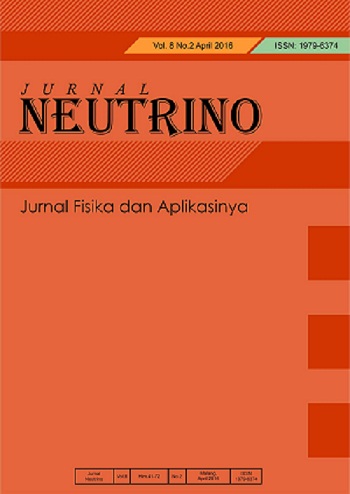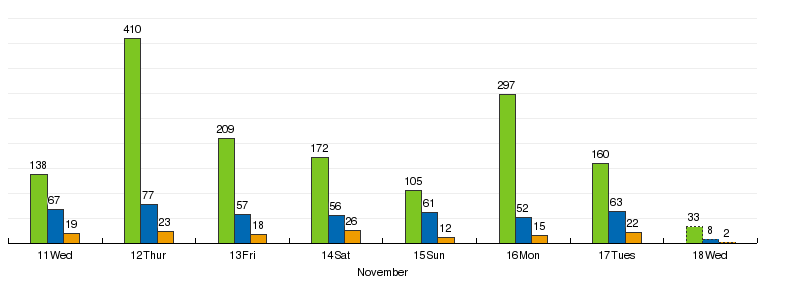COMPARISON OF EFFICIENCY AND CARBON EMISSIONS OF FILAMENT ELECTRIC STOVES AND INDUCTION ELECTRIC STOVES
Abstract
Issues related to energy sustainability and carbon emission reduction are continuously being concerned by the Government of the Republic of Indonesia. Various efforts and programs have been launched to achieve targets of the related issues. As known that energy use for cooking by the household is continuously increasing in relation to population growth that will of course increase in energy need which relates to the sustainability of presence energy and carbon emission. Accordingly, the LPG stove conversion program to an electric stove was introduced in order to achieve the target to solve such issues. This paper compared of efficiency and carbon emissions of both electric filament stoves and induction stoves. The result indicated that the induction stove has better efficiency compared with the electric stove. The study also was proved that the carbon emissions for both types of stoves were relatively low in comparison with LPG stoves. However, the enormous operational power of the induction stove is still a challenge that must be resolved to achieve the target of energy sustainability in Indonesia.
Keywords
Full Text:
PDFReferences
Reza I. and Yulianto D. Evaluasi terhadap karbon di dunia maju dan berkembang: sebuah usaha dalam kebijakan pembangunan lingkungan. PARADIGMA: Jurnal Ilmu Administrasi. 2017; 4(1): 113-138.
Tiandho Y., Afriani F., and Puriza M. An explicit model of temperature-dependent thermal conductivity for nanofluids. IOP Conference Series: Earth and Environmental Science. 2019; 353(1): 012013.
Firdaus F. Jejak Karbon Sektor Energi DI Yogyakarta dan Rekomendasi Jumlah Pohon yang Harus Ditanam untuk Reduksi Emisi Gas CO2. Asian Journal of Innovation and Entrepreneurship. 2019; 4(1): 23-32.
Handayani T., Hulukati S., Jaya R., Tiandho Y., and Abdullah R. The prototype of solar-powered building lighting IoT. IOP Conference Series: Material Science and Engineering. 2019; 486: 012079.
Sugiawan Y. and Managi S. The environmental Kuznets curve in Indonesia: Exploring the potential of renewable energy. Energy Policy. 2016; 98: 187-198.
Maulidia M., Dargusch P., Ashworth P., and Ardiansyah F. Rethinking renewable energy targets and electricity sector reform in Indonesia: A private sector perspective. Renewable and Sustainable Energy Reviews. 2019; 101: 231-247.
Shezan S., Al-Mamoon A., and Ping H. Performance investigation of an advanced hybrid renewable energy system in Indonesia. Environmental Progress & Sustainable Energy. 2018; 37: 1424-1432.
Nugrahayu Q., Nurjannah N., and Hakim, L. Estimasi emisi karbondioksida dari sektor permukim di Kota Yogyakarta menggunakan IPCC guidelines. Jurnal Sains dan Teknologi Lingkungan. 2017; 9(1): 25-36.
Badan Pusat Statistik. Badan Pusat Statistik. [Internet]. 2017. Available from: https://www.bps.go.id/statictable/2014/09/10/1364/persentase-rumah-tangga-menurut-provinsi-dan-bahan-bakar-utama-untuk-memasak-tahun-2001-2007-2016.html.
PPID Provinsi Jawa Barat. PPID Provinsi Jawa Barat. [Internet]. 2019. Available from: http://ppid.jabarprov.go.id/posting/read/1479-Jabar-Provinsi-Pertama-Konversi-Kompor-Gas-ke-Listrik.
Wiratmini N. P. E. Pemerintah kaji peluang konversi LPG ke kompor listrik. [Internet]. 2019. Available from: https://ekonomi.bisnis.com/read/20190506/44/919130/pemerintah-kaji-peluang-konversi-lpg-ke-kompor-listrik-.
Martínez-Gómez J., Ibarra D., Villacis S., Cuji P., and Cruz P.R. Analysis of LPG, electric and induction cookers during cooking typical Ecuadorian dishes into the national efficient cooking program. Food Policy. 2016; 59: 88-102.
Gould C., Schlesinger S., Toasa A., Thurber M., Waters W., Graham J., and Jack D. Government policy, clean fuel access, and persistent fuel stacking in Ecuador. Energy for Sustainable Development. 2018; 46: 111-122.
Banerjee M., Prasad R., Rehman I., and Gill B. Induction stoves as an option for clean cooking in rural India. Energy Policy. 2016. , vol. 88, pp. 159-167, 2016.
Istardi D. and Triwinarko A. Induction heating process design using COMSOL Multiphysics software. Telkomnika. 2011; 9(2): 327-334.
Hasanah A. and Handayani O. Perbandingan efisiensi energi dan biaya pada kompor induksi terhadap kompor listrik dan kompor gas. Jurnal Sutet. 2016; 6(2): 22-29.
PT. PLN (Persero). Statistik PLN 2018. Jakarta: Sekretariat Perusahaan PT. PLN (Persero); 2018.
Gomez J., Ibarra D., Villacis S., Cuji P., and Cruz P. Analysis of LPG, electric and induction cookers during cooking typical Ecuadorian dishes into the national efficient cooking program. Food Policy. 2016; 59: 88-102.
Ramirez, A. D., Perez, E. F., Boerom A. J., and Salas, D. A. Carbon Footprint of Energy Systems: Liquefied Petroleum Gas Based Cooking vs Electricity Based Cooking in Ecuador. ASME International Mechanical Engineering Congress and Exposition. 2017; 58417: V006T08A061.
DOI: https://doi.org/10.18860/neu.v14i1.13008
Refbacks
- There are currently no refbacks.
Copyright (c) 2021 Yuant Tiandho, Fitri Afriani

This work is licensed under a Creative Commons Attribution-NonCommercial-ShareAlike 4.0 International License.
Published By:
Physics Study Pragramme, Faculty of Science and Technolgy, Universitas Islam Negeri (UIN) Maulana Malik Ibrahim Malang, Indonesia
B.J. Habibie 2nd Floor
Jl. Gajayana No.50 Malang 65144
Telp./Fax.: (0341) 558933
Email: neutrino@uin-malang.ac.id
This work is licensed under a Creative Commons Attribution-NonCommercial-ShareAlike 4.0 International License
View My Stats










